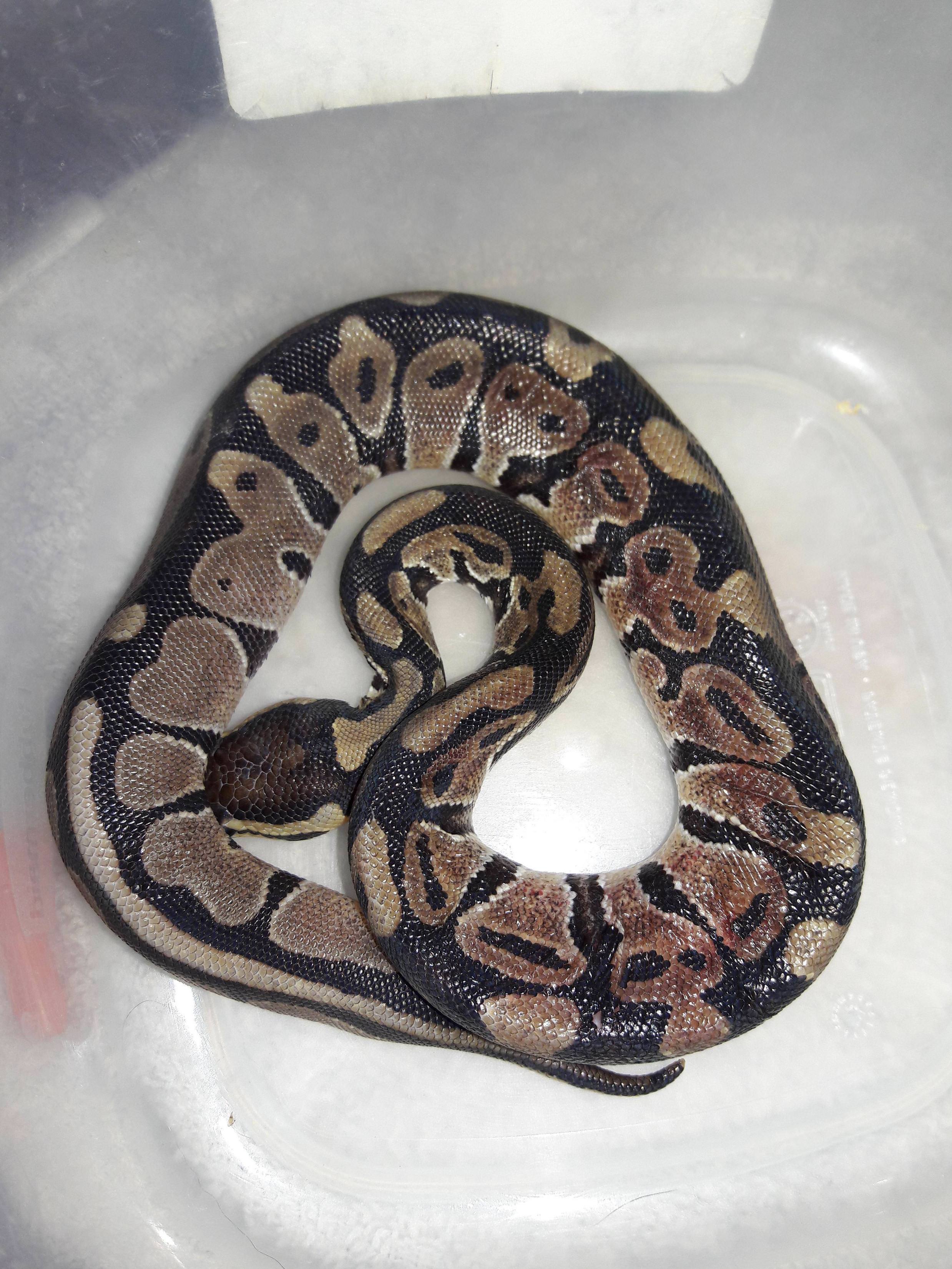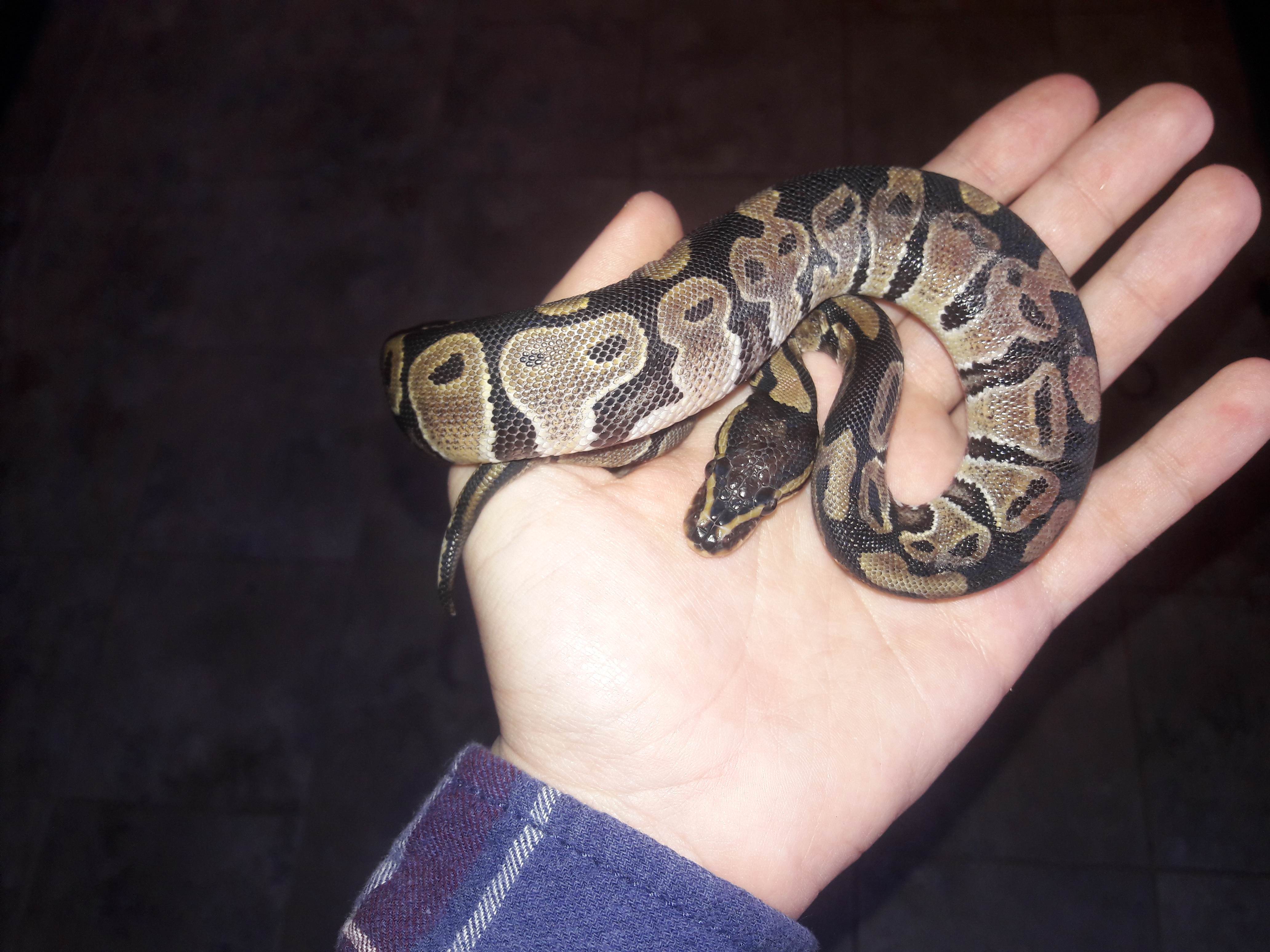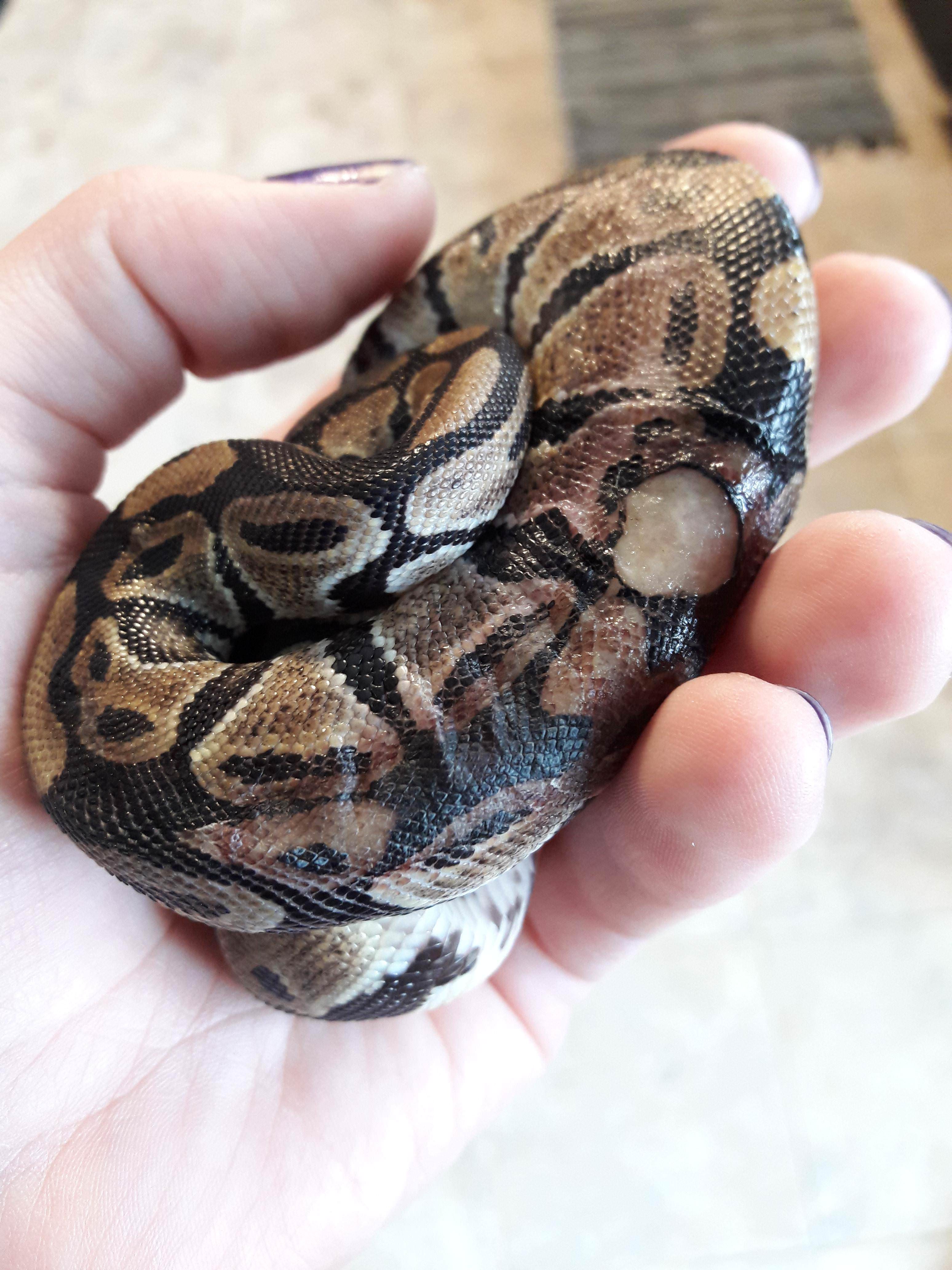This is a topic I really am finding very little information on, so I am starting this thread separate from my other progression thread to make it easier to find for future users who might need it. This first post will be a little long with a little backstory and then I will try to focus on treatment and progression of my current snake who I believe to be suffering Vitamin C deficiency.
A while back on August 5th I adopted a rescue baby Ball Python from a chain pet store. I won't go into too much detail in that regard - that can all be read and followed on her thread I have going - just the relevant details here. I adopted her in August. She had not eaten anything but one pinkie in six weeks. She had, in that time, lost about 20% of her body mass - from 62 grams to 51 grams. She was, quite literally, skin and hanging flesh. It took another week for her to eat for me.
One trait that was immediately noticeable was her skin was soft, and incredibly fragile - like a 90 year old human's skin might be.
I have gotten her eating like an absolute rockstar, and she has progressed beyond what I ever would have hoped. I began taking her to steady vet care when I noticed large pockets of fluid underneath her skin, like huge blisters. My vet was baffled by it. She was put on antibiotics for possible sepsis, and when they didn't go away, fluid was drawn and tested. They found nothing remarkable - The fluid had nothing in it. There was 'one or two bacteria cells' they found under a microscope that they thought was skin contamination. A white blood cell or two. They sent it off for fluid analysis, which also showed nothing remarkable - no signs of infection, swelling, irritation, virus. They even said there was no point to a bacteria swab test because nothing would grow. My vet spoke with the other vets at the office, as well as the one vet who has been treating reptiles longer than he has been alive - and everyone was puzzled. I was given a few options for a cardiac stick for a blood test and declined, as my little snake - Hera - is improving leaps and bounds with every passing day.
Hera shed the other week. While a lot of her skin, especially where she has filled out nicely, is seemingly back to 'normal' her midsection is still very soft and fragile. She split her skin open during shedding, and I came home to her bloody, scales ripped down to the lower layer but not all the way through - I am assuming it tore over one of the blisters. I have been treating it like a burn. A roughly two inch section of skin seems to have torn away from the lower layer but not torn from her body and is hardened up like a tough scab, I expect that will come free in a few day's time. She doesn't seem too bothered by it honestly, and has still been eating like normal.
Well, the other day, I came across an article in Reptiles Magazine written by a vet about vitamin C deficiency in extremely malnourished snakes, which can cause issues such as spontaneous skin rupture with routine stretching (i.e. eating and shedding,) poor wound healing, blisters, and fragility. Well, ALL of that is EXACTLY what she is going through - and she was, indeed, incredibly malnourished when I got her. So I think I am nearly certain this is the issue. Treatment seems to be supplemented vitamin C (surprise!). Since snakes only eat weekly, daily supplementation via injection seems to be recommended (otherwise it will take a long time to get enough C to make up for the loss, with only eating weekly). Water supplementation may be an option, or injection supplementation via injecting it into the prey item you feed.
however, vitamin C is a water-soluble vitamin and is not stored in the body. Instead your body depends on you taking in an adequate amount as needed, any excess you don't need and immediately use is passed as waste, so it's not like you can just bulk them up with more than the daily recommendation and expect that to work. it needs to be more frequent to be made readily available for reparation of the deficiency, as it will be slow.
I believe the improvement I see in her skin is from the vitamin C she has been naturally getting with her food, however if I expect he to be in better shape by her next shed I'd better start some kind of supplement. I plan to bring her to my vet this coming week to see what he thinks.
here are the four main sources of information I found, the first being the article in Reptiles Magazine that started it:
http://www.reptilesmagazine.com/Rept...-C-Deficiency/
https://en.wikivet.net/Hypovitaminosis_C_-_Reptiles
https://reptile-savvy.webs.com/nutritionanddisease.htm
https://reptile-savvy.weebly.com/vitamin-c.html
Here are some pictures of the progression so far. This first one was taken the day I bought her home, August 5th. notice her flesh is so loose it literally puddles underneath her onto my pinky finger. Lighting makes it hard to appreciate how baggy she is, she even had wrinkles on her neck and back of her head.

This one is actually a few good meals after I got her, and is an improvement in her original condition, but shows her body condition better than the ones I took when I got her. Fresh from a soak to remedy lingering dehydration. Also the first time I started noticing fluid pockets. Taken September 4th.

These next pics show her after her first shed. Both sheds with me have been singe piece sheds. The first shed, she had a little tiny hint of the red bruising you'll see later after the next shed, and a three scale sized tear that went to the muscle that closed up in a matter of days. This is to show how vastly she has been improving. Not perfect yet but HUGE progress. Also visible, some of the wrinkles mid-body from the (now empty post shed) blisters. These were taken September 30.


here is a close up of the fluid pockets, the start of which is indicated by the red arrow. Taken October 30.

Body condition picture, taken November 13

This is how I found her after her second shed. The red is not loose blood but bruising, where the skin had torn away from the underlying tissue. Also where she has consistently had a fluid pocket. Pics taken December 5th.


Pics a few days later showing healing progress. Taken December 10.

And finally, the most recent picture. One just of her wound, and one where I highlighted the border of the tough, scabbing skin that will peel off in green because it can be a little hard to see if you don't know what you are looking for. The tip is starting to peel back as of today, and I am actually very pleased to find not raw wet wound underneath but more leathery healing skin. It does not bother her to poke at and surprisingly she does not seem to be in pain. Pics taken today, December 15.











 Reply With Quote
Reply With Quote










